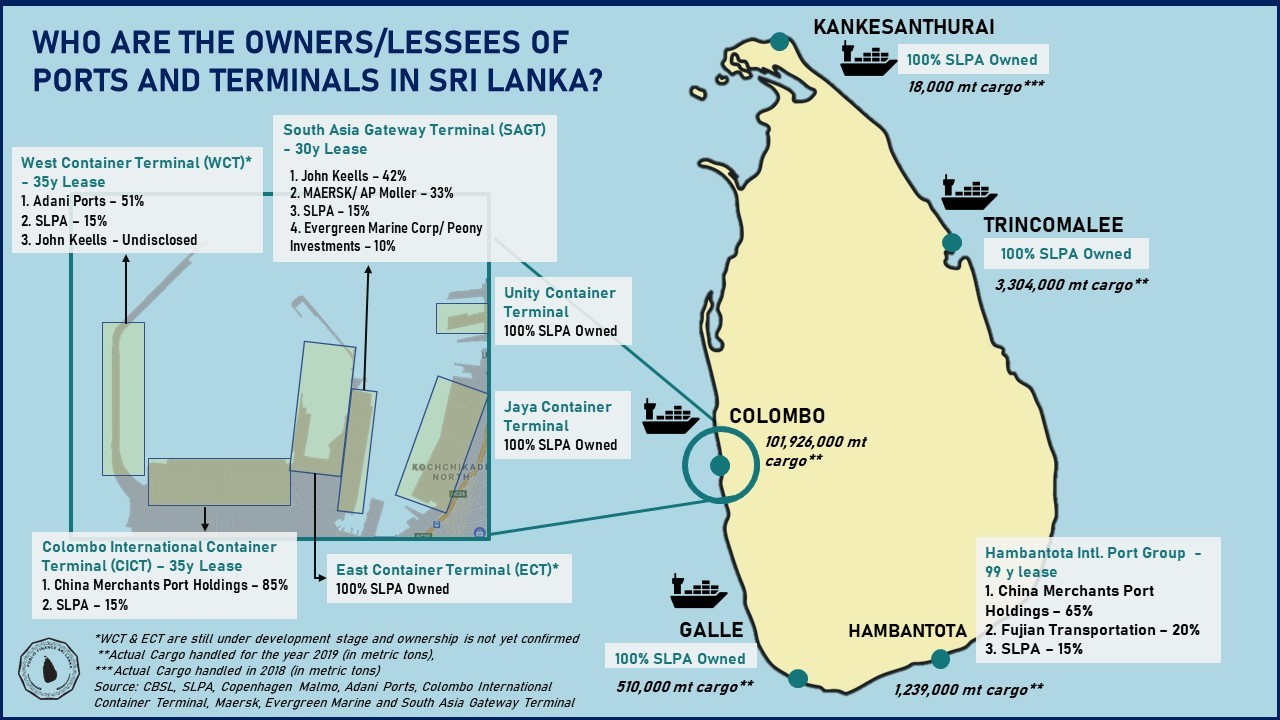


Before 1999, all ports and terminals in the ports used to be 100% owned and managed by the Sri Lanka Ports Authority (SLPA) — a State Owned Enterprise of the Government of Sri Lanka.
For the very first time, the SLPA signed a Public Private Partnership (PPP) agreement in 1999 to manage the South Asia Gateway Terminal (SAGT) in the Colombo port for a period of 30 years.
Colombo International Container Terminal (CICT) was the next terminal to be set up as a joint venture between China Merchants Port Holdings Company Limited, Aitken Spence PLC, and SLPA under a 35-year Build Operate and Transfer Agreement, in 2011. During the initiation, China Merchant held 55% of CICT while Aitken Spence PLC held 30% and SLPA, 15%.
In 2018, the Hambantota port which was initially under the control of SLPA was leased out as a joint venture to China Merchant Port Holdings (CM Port) for 99 years. The CM Port invested an amount of up to USD 1,120 million into Hambantota Port. CM Ports paid a total amount of USD 974 Million to SLPA, for the acquisition of the 85% issued share capital while the remaining 15% was held by SLPA — this entity was named Hambantota International Port Group (HIPG). The HIPG then acquired 58% issued share capital of Hambantota International Port Services (HIPS) while the remaining 42% was held by SLPA. The remaining USD 146 million from CM Ports was deposited into a bank account in the name of the Company in Sri Lanka. Later, CM Port sold 20% of its stake in HIPG to Fujian Transportation.
After 1999 the only newly developed terminal which is expected to hold 100% ownership and control of the SLPA is the East Container Terminal (ECT) in the Colombo Port.
